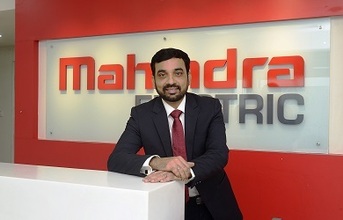
However, Government has put in place a very definitive target for electrification with the help of NITI Aayog to have 40 percent EV penetration by 2030. Government is also trying to roll out various incentives, which will help India move towards these targets. Mahindra is competitively placed to take advantage of this opportunity, given its first mover advantage in the industry.
We strongly feel that a substantial growth phase will come from the 2020 to 2025 time period With investments in new technologies, ecosystem development and economies of scale, EVs will achieve parity with conventional vehicles by 2025 and that is when the flood gates will really open.
How do you see the market and the business growing in the next two years?
While two years is a very short time for the industry to show exponential changes, we at Mahindra Electric are hopeful that the current buzz in the market will work positively for Electric vehicles in general and particularly for us.
The most immediate impact of EVs can be in the last mile delivery and public mobility space. Both the segments have much higher running requirements than an individual alone, which makes EVs more economical and the business more viable. In general market the early adoption will come from fleet operators, who are also able to better utilise Electric vehicles, given the lower operating expenses involved. In the next two years the government will lead by example and a majority push for electric vehicle sales is going to come from Government tenders for two-wheelers, three wheelers, four wheelers and buses as part of procurement. The market will also experience an overall increment in the demand for EVs resulting from this.
When it comes to electric vehicles, the role of the OEM doesn't simply end with developing, manufacturing, selling and servicing the products. The OEMs also need to educate the customers and facilitate the development of the ecosystem. How are you going about it?
As pioneers and the only OEM in the EV space in India, our role spans beyond the mere development and production of EVs. We invest considerable time and energy towards educating customers. In addition to Test Drives, we undertake several other initiatives. For example, we organised an all-electric expedition from Kashmir to Kanyakumari to add to the visibility that EVs have in India. We also participate in several events, auto shows as well as technology based events, to showcase our EVs to the attendees. But I think the biggest contributor to awareness creation for us are our digital campaigns. Through digital advertising, interesting content marketing campaigns as well as our digital properties - websites, social handles etc., we reach out to the new age Indian urban audience.
(Continued on next page)


























